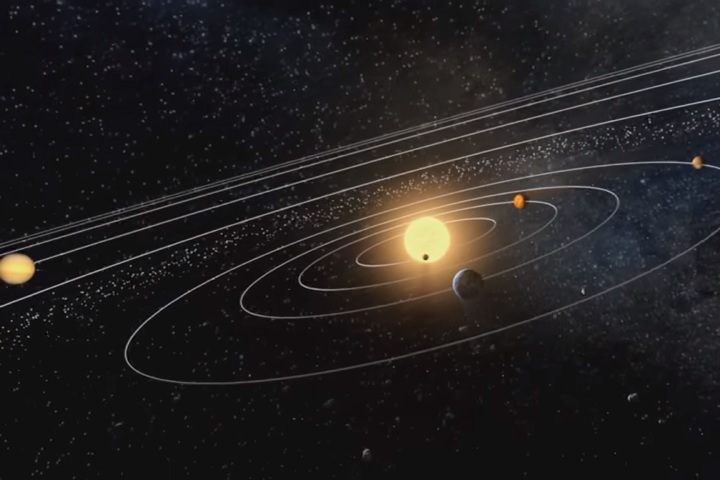Scientists find dinosaur hatchery in India with more than 250 fossilized titanosaur eggs
01/25/2023 / By Kevin Hughes

Scientists from the Indian capital New Delhi discovered a hatchery of dinosaurs, complete with 256 fossilized eggs.
The hatchery is located in the Lameta Formation, a geological formation in India’s Narmada Valley that spans 620 miles from east to west. It covers three Indian states – Madhya Pradesh, Gujarat and Maharashtra – and hosts numerous fossilized dinosaur eggs and skeletons dating from the late Cretaceous period.
According to the scientists, the hatchery had been composed of 92 nesting sites that once belonged to titanosaurs. This family of herbivorous dinosaurs were known for their long necks and tails, massive size and small heads. The hatchery at the Lameta Formation, one of the biggest known to man, hinted that the dinosaurs nested together just like modern birds.
Upon further scrutiny, the scientists identified eggs that came from six titanosaur species – more than what has been reported through skeletal fossils at the site so far. (Related: Researchers: First ever fossilized brain tissue from a dinosaur found.)
According to the researchers, the clutches being situated close to each other implies that parents did not linger around to watch their newborns hatch. This is because there would be no space for them. If they did, paleontologists would have also discovered more fossilized broken eggs.
Furthermore, the absence of juvenile titanosaur bones in the Lameta Formation hinted that baby titanosaurs left the nest soon after hatching. Nevertheless, the findings hint that the Indian subcontinent saw a greater diversity of dinosaurs than earlier thought.
“Our research has revealed the presence of an extensive hatchery of titanosaurs in the study area and offers new insights into the conditions of nest preservation and reproductive strategies of titanosaurs just before they went extinct,” said lead researcher Harsha Dhiman.
Comprising some 40 species, titanosaurs were the last great family of sauropod dinosaurs before the Cretaceous-Paleogene extinction event about 65 million years ago. Their fossils have been discovered on all continents, except Antarctica. Only a little amount of information about the reproductive habits of titanosaurs and other dinosaurs can be gathered from their remains, as their reproductive organs don’t fossilize.
Discovery provides a window into titanosaurs’ egg-laying behavior
The researchers also determined several habits of titanosaurs based on their observations from the hatchery.
Scientists believe that titanosaurs dug shallow holes for their eggs as modern crocodiles do. Some of the eggs that were found tightly packed together had very similar diameters, indicating they had been buried with their surfaces touching.
The kind of rock that held the eggs led the scientists to believe that a number of the clutches were laid close to the banks of the lakes and ponds. Clutches further from the bodies of water could hatch, and therefore, had more fossilized eggshell fragments. Meanwhile, clutches repeatedly submerged underwater were eventually buried in sediment that prevented them from hatching.
They also discovered the first ever dinosaur egg-in-egg, hinting a creature had a segmented uterus and laid its eggs consecutively like modern birds. An egg-in-egg happens when an egg is pushed back into the mother’s reproductive system and becomes embedded with another newly forming egg. It indicates that dinosaurs had a reproductive biology more similar to that of birds and crocodiles than turtles and lizards, as earlier presumed.
But Darla Zelenitsky of the University of Calgary, a researcher who wasn’t involved in the study, calls for caution on taking the six diverse egg types as a sign of six different species. She said larger or smaller individuals of the same species might lay eggs that outwardly appear different, or different species might lay eggs that are identical.
Follow Discoveries.news for more news like this.
Watch this video about a skeleton of a new dinosaur species found in Missouri.
This video is from the Alex Hammer channel on Brighteon.com.
More related stories:
Baby pterodactyls could fly from BIRTH, reveals fascinating study.
Brazil dig unearths evidence of a new desert-dwelling dinosaur species.
Sources include:
Submit a correction >>
Tagged Under:
ancient history, artifacts, breakthrough, dinosaur eggs, Dinosaurs, discoveries, fossilized eggs, fossils, hatchery, India, Lameta Formation, Narmada Valley, prehistory, real history, research, sauropod, titanosaur
This article may contain statements that reflect the opinion of the author



















